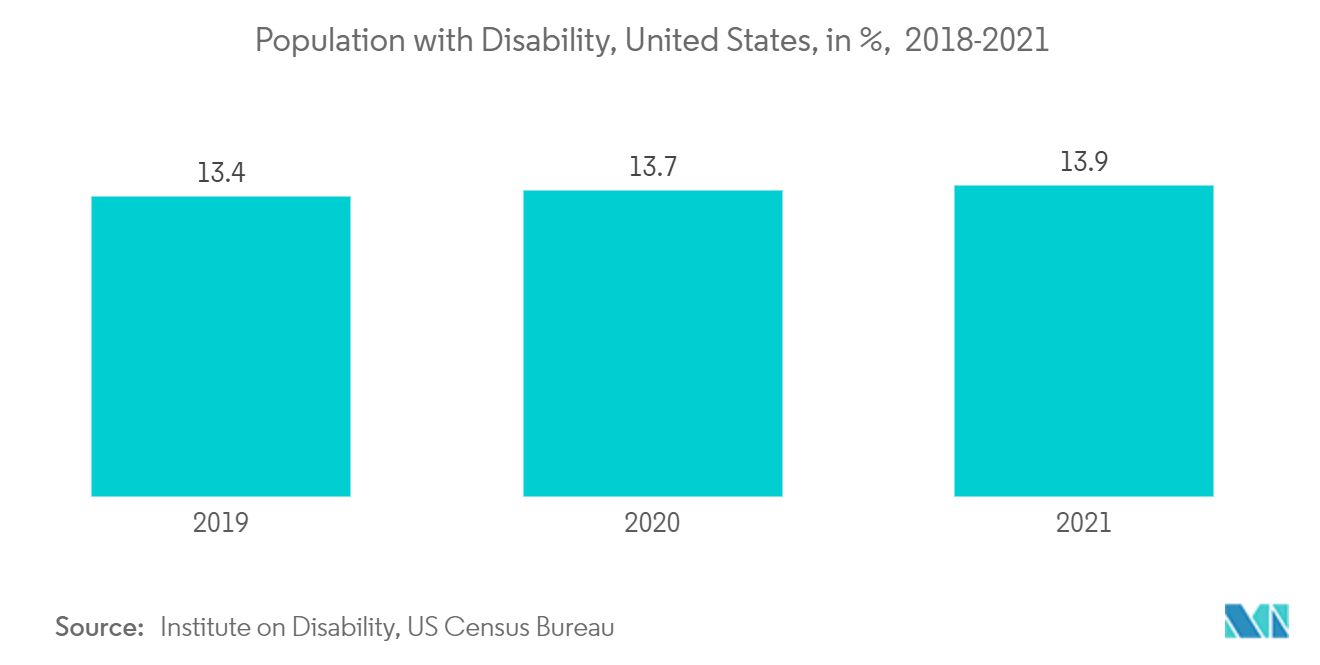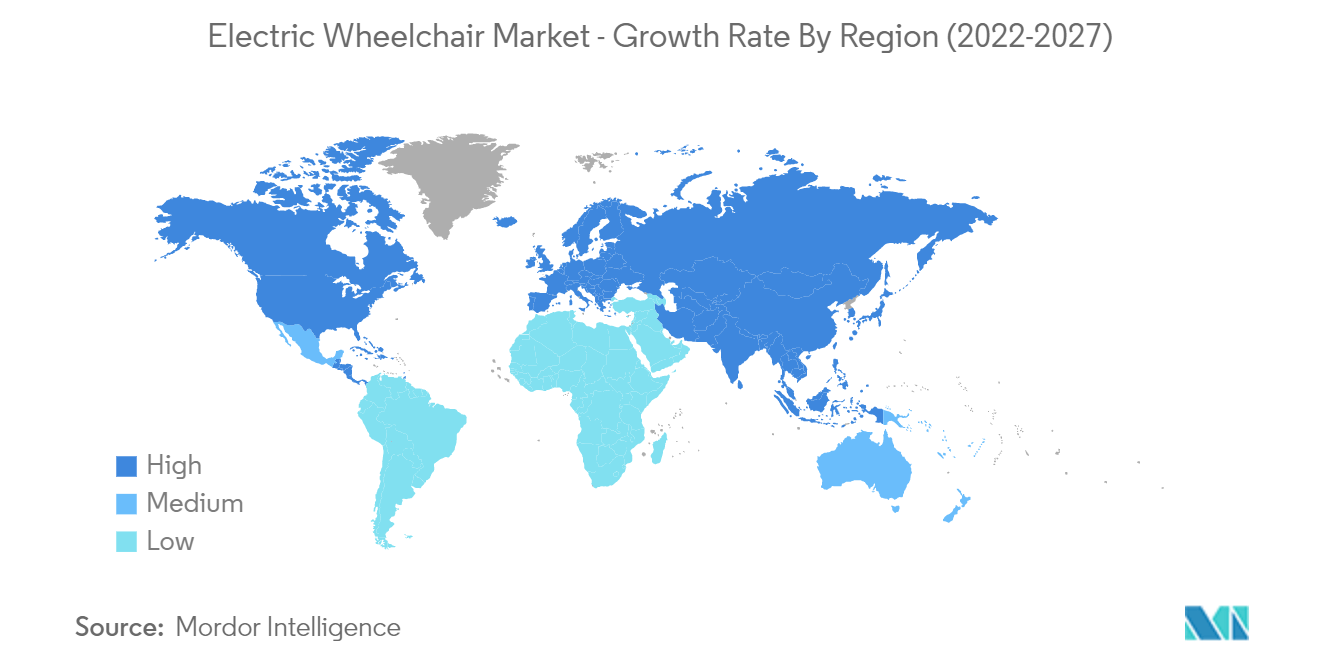Market Trends of Electric Wheelchair Industry
This section covers the major market trends shaping the Electric Wheelchair Market according to our research experts:
Growing Elderly Population Across the World
The growing elderly population across the world is driving the electric wheelchair market. As per the data released by the World Health Organization, the number of people aged 65 years and over may double as a proportion of the global population from 7% in 2000 to 16% in 2050. By then, the number of older adults may be greater than that of children (aged 0-14 years) in the population. Thus, an increase in the elderly population is anticipated to create an opportunity to adopt electric wheelchairs in the global market.
The United Nations estimates that by 2030, with a ratio of 1.04 to 1, the elderly population will outnumber children. Economic development in countries like India created many work opportunities for the younger population, who cannot care for the elderly. Both younger people who work hard and older people who lack upper body strength find manual wheelchairs exhausting.
According to the World Health Organization, 50 million people are injured annually due to vehicle accidents worldwide. Electric wheelchairs aid in patients' safe and comfortable movement from one area to another. Thus, the increase in accidents is expected to raise the demand for electric wheelchairs over the forecast period.
According to Worldbank.org, nearly 200 million people are suffering from significant disabilities globally. Wheelchairs are used by disabled people and people with lung and cardiovascular ailments who cannot afford to walk for long distances. The rising elderly population and the increasing number of chronic diseases are expected to contribute to the demand for electric wheelchairs during the forecast period.
Also, the trend of rapidly aging demographies like Europe, North America, Japan, and China is further accelerating the growth in the electric wheelchair market.
Key players are expanding their manufacturing capacity to address the growing market for electric wheelchairs. For instance
- In October 2021, Ottobrock, the global health-tech company, officially opened a new manufacturing plant for wheelchairs located at Blagoevgrad in Bulgaria. This is the company's tenth manufacturing facility worldwide. The manufacturing plant will undertake fabrication work for wheelchairs from other Ottobrock plants in China, Germany, and Austria.
Thus the confluence of the aforementioned factors will drive the growth of the electric wheelchair worldwide.

Asia-Pacific to Exhibit the Highest Growth Rate
China and India are the two most populated countries in the Asia-Pacific. With over 241 million Chinese individuals over 60 years, China is considered an aging economy. Moreover, China produces roughly 75% of the world's electric wheelchairs, owing to the aluminum production hubs and major players operating in the country.
India is the second most populated country in the world, with a tally of about 1.40 billion. About 2% of the total population suffers from a disability, and about 30% have a mobility impairment and need assistance. India ranks first out of all countries in road accidents. According to the National Crime Records Bureau data, 422659 accidents occurred in India in 2021, leading to 155000 deaths and 371000 injured people. Thus the rising number of injured people due to the increasing road accidents is also likely to contribute to the growth of the electric wheelchair market in India.
North America is expected to follow Asia-Pacific during the forecast period. As per the United States disability statistics for 2021, 61 million adults in the US lived with some disability. These disabilities are more common among older individuals, with almost half of those aged 75 years and older living with a disability, which is expected to increase the demand for electric wheelchairs across North America.


